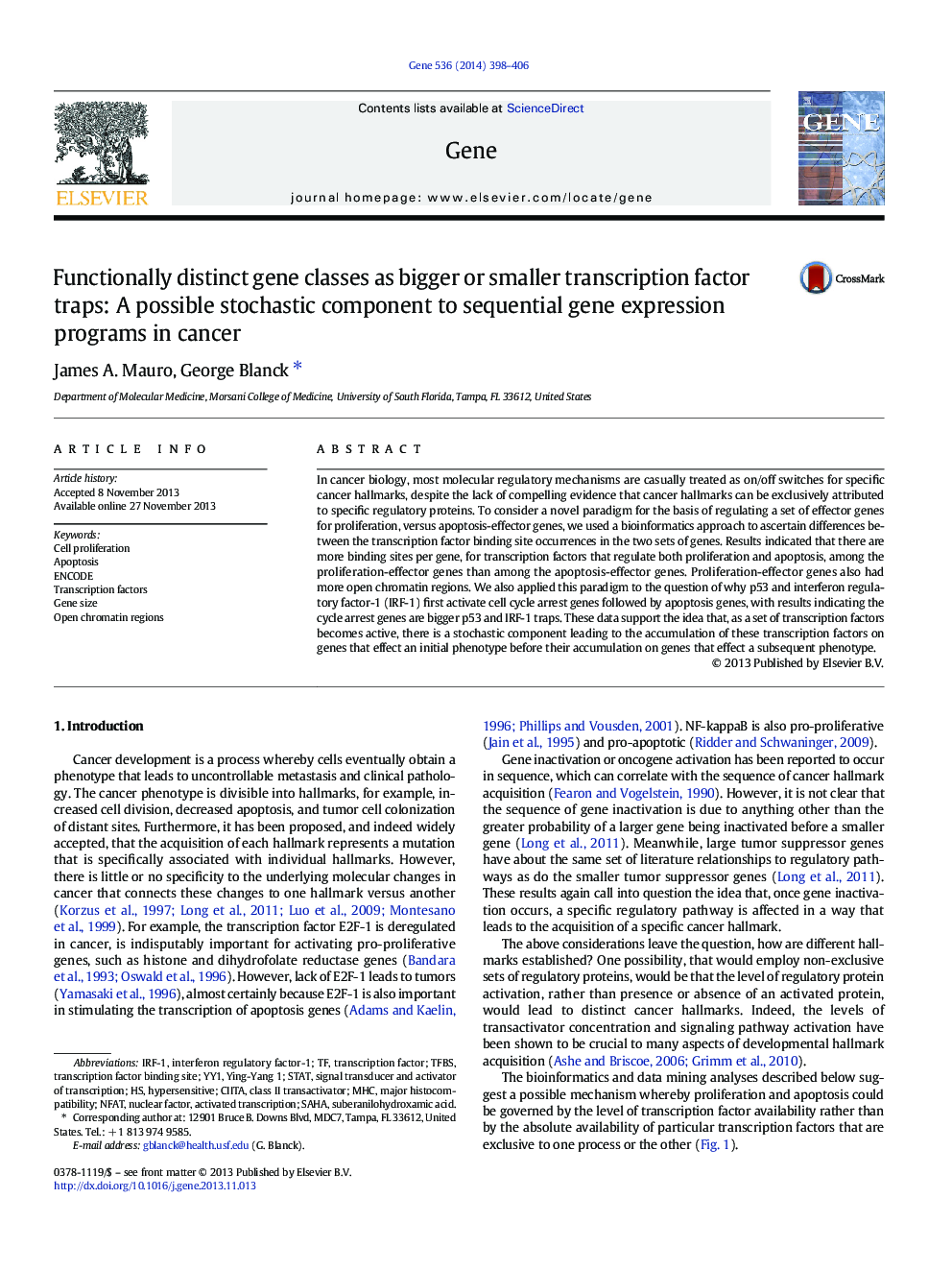| کد مقاله | کد نشریه | سال انتشار | مقاله انگلیسی | نسخه تمام متن |
|---|---|---|---|---|
| 5905889 | 1159942 | 2014 | 9 صفحه PDF | دانلود رایگان |
- Different gene classes are characterized by different gene sizes.
- Increased gene size represents increased function.
- Proliferation-effector genes have more transcription factor binding sites, for the same TFs, than do apoptosis-effector genes.
- Proliferation effector genes have more open chromatin regions than do apoptosis effector-genes.
- Tumor suppressor genes have more transcription factor binding sites for p53 and IRF-1 than do apoptosis-effector genes.
In cancer biology, most molecular regulatory mechanisms are casually treated as on/off switches for specific cancer hallmarks, despite the lack of compelling evidence that cancer hallmarks can be exclusively attributed to specific regulatory proteins. To consider a novel paradigm for the basis of regulating a set of effector genes for proliferation, versus apoptosis-effector genes, we used a bioinformatics approach to ascertain differences between the transcription factor binding site occurrences in the two sets of genes. Results indicated that there are more binding sites per gene, for transcription factors that regulate both proliferation and apoptosis, among the proliferation-effector genes than among the apoptosis-effector genes. Proliferation-effector genes also had more open chromatin regions. We also applied this paradigm to the question of why p53 and interferon regulatory factor-1 (IRF-1) first activate cell cycle arrest genes followed by apoptosis genes, with results indicating the cycle arrest genes are bigger p53 and IRF-1 traps. These data support the idea that, as a set of transcription factors becomes active, there is a stochastic component leading to the accumulation of these transcription factors on genes that effect an initial phenotype before their accumulation on genes that effect a subsequent phenotype.
Journal: Gene - Volume 536, Issue 2, 25 February 2014, Pages 398-406
